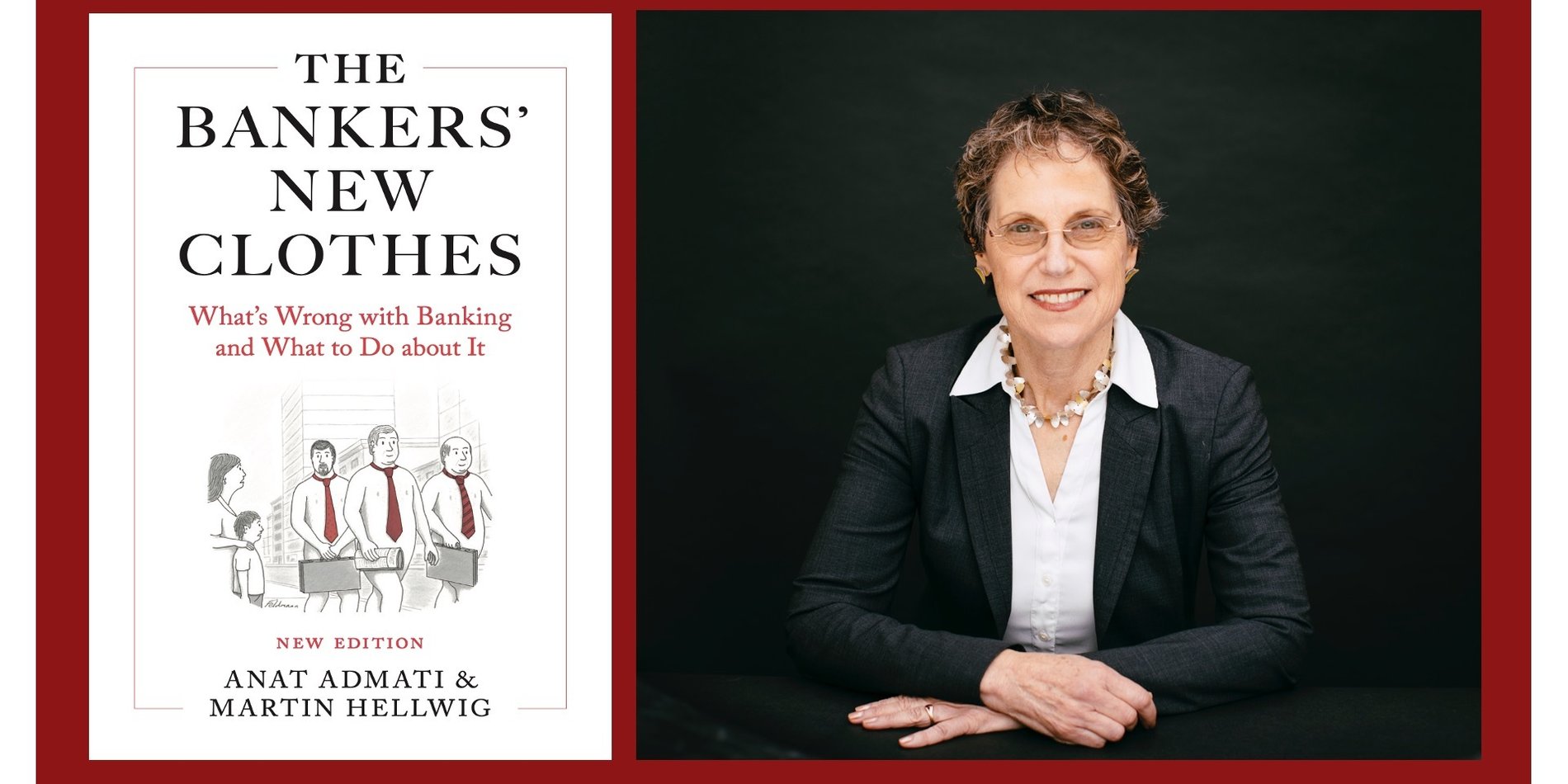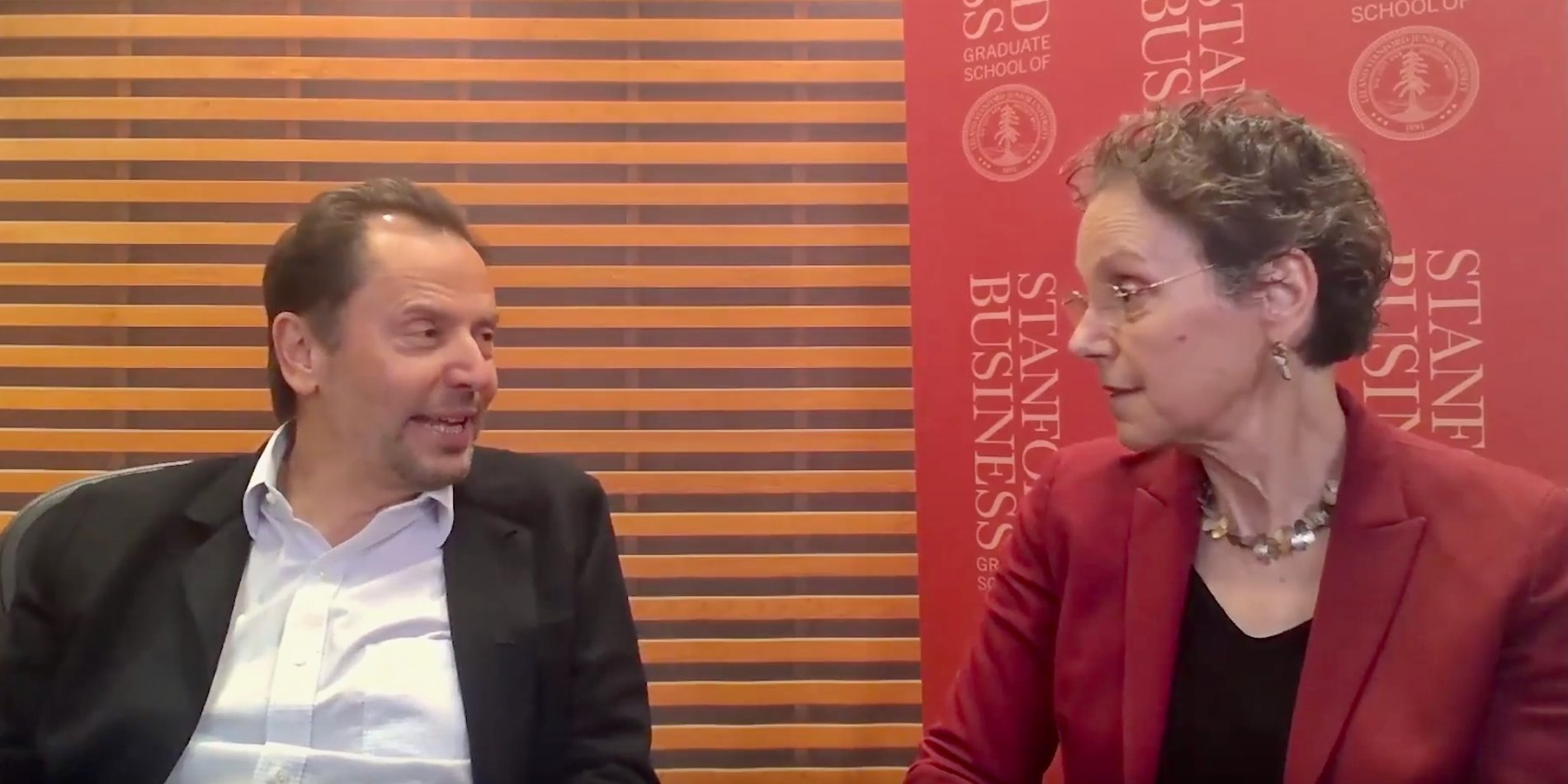Debating the COVID-19 Bailout
“Bailout” is a loaded word. Some view government support of the economy during financial crises as an essential component of well-functioning capitalism, while others see government stimulus packages as inefficient and poorly-governed opportunities for crony capitalism.
CASI hosted a panel discussion on April 8 2020, just two weeks after the first $2.2 trillion CARES Act stimulus package was passed, to discuss the following question: what is the government’s responsibility and role in providing resources to help individuals and firms uphold their commitments in times of shock and crisis? GSB Finance Professors Arvind Krishnamurthy, Hanno Lustig, and Amit Seru joined moderator Professor Anat Admati to debate the objectives, policies, and implementation strategies of the U.S. government’s recent Covid-19 stimulus packages. This conversation was part of an ongoing discussion in the academic and policy communities; in fact, before the CARES Act was passed, our panelists and moderator were among over 230 academics who signed a letter to Congress arguing against the focus on large corporations in government bailouts. Here are the key points they discussed in the CASI panel:
The objective of government bailout should be to avoid breaking employment relationships.
Our panelists agreed that the coronavirus pandemic presents an unprecedented shock to our global economic and financial system, and the role of government during such a crisis must be to minimize damage to the productive structure of the economy. During this period of reduced cash flows to both corporations and individual households, many will not be able to meet their obligations—think rent, loan payments, or employee payroll. Our panelists see the role of a government bailout during such a crisis as a way to bridge the gap for firms and individuals to meet their obligations.
Our panelists focused particularly on labor markets in thinking about how to minimize breakages of productive relationships within the economy. As Professor Lustig said, “Labor markets are not very efficient, much like the marriage market; if you break up with your current partner, it often takes quite some time to find another match.” For example, after the Great Recession, the U.S. unemployment rate did not recover to its pre-crisis levels until 2017, nine years after the crisis began. Focusing bailout money on preserving people’s jobs and preventing unemployment during this temporary shutdown will help to reduce the amount of time it takes to bring the economy back up to full production once we’re able to reopen.
Good policy is targeted, timely, temporary, and cost-effective.
Our panelists also agreed that efficiency and cost are key performance indicators that must be evaluated when looking at the efficacy of a bailout. As Professor Seru said, “You can spend infinite money to solve all problems, but that’s not the world we live in.” Good economic policy is constructed to ensure that each dollar spent has sufficient impact on the core objectives of the bailout. This is achieved by ensuring that relief money is targeted towards those who need it most, and on whom additional funds would have the greatest impact.
Additionally, our panelists emphasized the need to minimize any economic distortion that bailouts might create, with a focus on creating temporary effects that will not have unintended consequences and effective governance and accountability. For example, Professor Lustig warned against making unemployment benefits too generous such that they might distort the labor market and make it attractive for people not to return to work when the crisis ends.
With these points in mind, analysis of the current bailout packages in the United States calls into question both their targeting and cost-effectiveness. Professor Seru questioned the small amount dedicated towards actual healthcare and pointed out that the bailout allocations to small businesses and corporations will run out in less than two months, if the goal is to “freeze” the economy as it was and prevent layoffs and defaults on debts that have collateral consequences.
Which institutions are best positioned to deliver economic relief?
Implementation was the sharpest point of debate between our panelists during the discussion, with each panelist suggesting a different set of institutions as best positioned to deliver economic aid quickly, efficiently, and—most importantly—accountably. Professor Krishnamurthy argued that the Federal Reserve is the best and most competent institution to deliver fast relief to prevent economic harm. Professors Lustig and Seru, however, were hesitant to recommend funneling bailout funds almost entirely through the banking sector, which is already showing some signs of distress and which will only continue to face mounting pressures as individuals and firms default on loans and payments. Professor Seru also took issue with the idea that the Federal Reserve would play such a heavy hand in buying and assigning value to specific financial asset classes, like corporate bonds.
Professor Lustig proposed leveraging the Internal Revenue Service and the Social Security Administration to fund the private sector’s payroll, at a certain replacement rate to reach individuals whose income was disrupted and relieve the corporations of payroll expenses most directly. Within this implementation strategy, temporarily furloughed employees could still receive salaries without having to go through a banking sector intermediary, and layoff breakages could be avoided within the private sector.
One thing that all panelists did agree on, however, was the need for accountable expertise within the U.S. government to address these questions. All three panelists agreed that one of the biggest opportunities for current GSB students to help improve economic outcomes is to work in the public sector, to help address this knowledge gap.
At the end of the discussion, we polled our audience to see which bailout approaches they favored, and which institutions they thought were best positioned to deliver on those approaches. The vast majority (80%) of poll respondents favored getting money directly to individuals and households over giving money to corporations and the financial sector to pass on to individuals. 31% of respondents thought that the Federal Reserve should have power and control over bailouts, while 69% favored the U.S. Treasury and other executive branch agencies. Interestingly, 52% of respondents said that they would consider working for these public sector institutions.
A great deal has happened since April 8, including the continuing rise of unemployment to record numbers in the United States and an announcement from the Federal Reserve on April 28 that they will buy up $500 billion of corporate bonds with little restrictions on how that money can be used, as well as $500 billion of municipal bonds from cities and counties above 250,000 and 500,000 residents, respectively. Clearly, we must continue the discussion of how governments can and should bail out businesses in times of crisis, in light of the one that continues to unfold around us.



